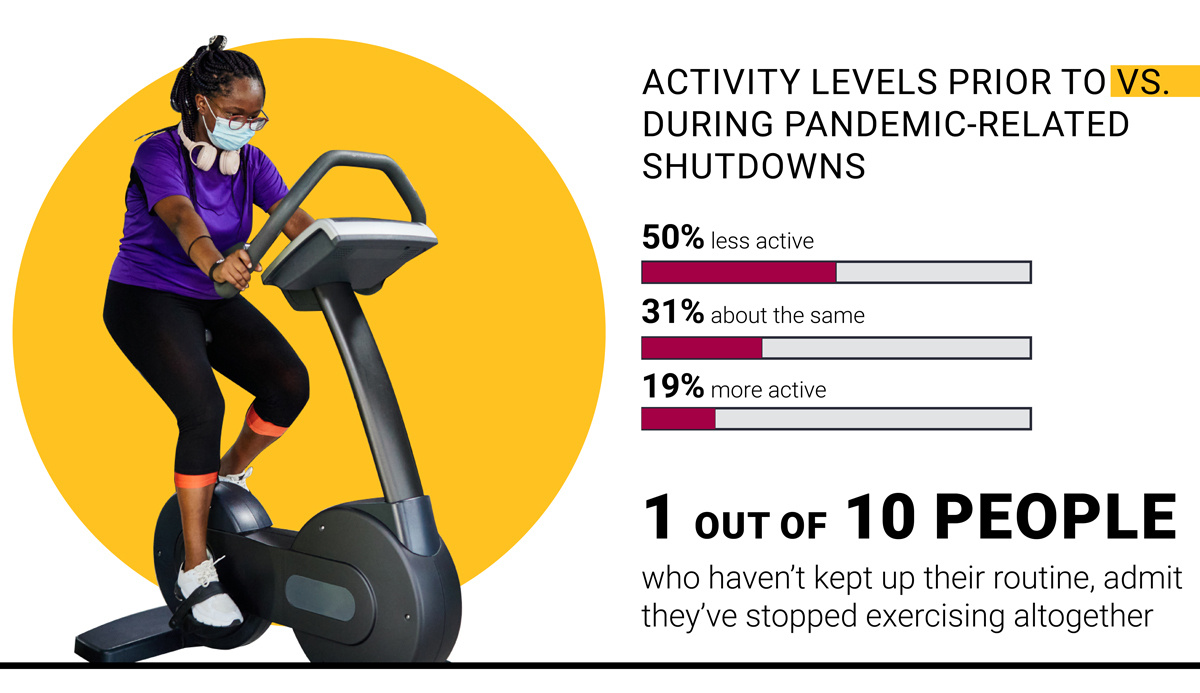The Fitness Club Industry’s Decline
The first group of states mandating club closures started in mid-March, 2020. By early April, 48 states would shut down gyms, health clubs, and studios. In the spring, virtually all clubs were closed in the U.S. During this time, 300 million Americans were without access to a fitness center.
By the end of 2020:
17% of clubs permanently closed
Industry revenue fell by 58% relative to 2019 sales
44% of the fitness industry workforce lost jobs
Executives, small business owner-operators, personal trainers, fitness instructors, administrative staff, and seasonal employees were all affected.
Without access to health and fitness clubs, some people managed to exercise outdoors and at home. But it wasn’t the same. Fitness consumers found it difficult to stay motivated without their gym, according to The COVID Era Fitness Consumer. A separate Emicity study found that California’s closures disproportionately impacted the physical activity levels of those in the lowest income brackets. Not everyone can purchase fitness equipment, a bike for the trails, or running gear for all-weather conditions.
There is no substitute for health and fitness clubs. Gyms and studios provide the environment, equipment, and accountability essential for healthy behavioral change—many at an affordable cost.
Restrictions Continue[d] to Curtail Fitness Businesses in 2021
By some accounts, 2021 started strong—member traffic was up in January 2021 from December 2020, but still down relative to January 2020. Data from payment processing companies shows that member joins are down Q1 2021 vs. Q1 2020 by 30-40%. Visits and bookings are also down Q1 2021 vs. Q1 2020.
The closure rate for studios is higher at 19% while the failure rate for clubs totals 14% as of writing. Closures, restrictions, and expenses incurred to comply with guidelines and improvements in ventilation continue to cripple health and fitness centers. Lean staffing levels mean many industry employees who lost their jobs may be gone for good. With persisting restrictions in 2021 and a slow vaccine rollout, fitness businesses still need relief.
Relief Efforts Remain Crucial for the Fitness Industry
Advocacy efforts for relief continue. PPP was not adequate to address the financial plight of operators. As a fixed-cost business, any minor change affecting revenue can dramatically impact a fitness club’s bottom line. Ongoing shutdowns and restrictions brought gyms and studios to the brink. Those who survived continue to struggle with the aftermath.
To date, the GYMS Act (Gyms Mitigation and Survival Act) has received 130 sponsors. The GYMS Act will address many of the financial challenges club operators faced due to the pandemic. The $30 billion fund—specific for fitness facilities—would be the first legislation passed to directly assist the health and fitness industry.
IHRSA will continue to seek relief efforts to fulfill the association’s mission of growing, promoting, and protecting the industry. The growing importance of physical activity has cultivated a renewed focus on advocacy for stimulus legislation like the Personal Health Investment Today (PHIT) Act.

